#pascuali
Explore tagged Tumblr posts
Text
No hay peatones ni internet, los autos son blancos y los jóvenes no pueden tener barba: un argentino en la ciudad más extraña del mundo
Por Cinthia Ruth Ashgabat es la capital de Turkmenistán y está ubicada en medio del desierto de Karakum, en Asia Central. Se destaca por ser una de las urbes más lujosas, vacías, limpias y exageradas del globo. El porteño Nicolás Pasquali, que la visitó recientemente, dijo que le pareció haber estado en “una película surrealista” Nicolás Pasquali es porteño y tiene 32 años. Está de viaje por el…

View On WordPress
#194 paises recorridos#32 años#Argentino#Ashgabat#Capital de Tuerkmenistan#Infobae#Nicolas Pascuali#Travesia
0 notes
Text
DAY 3 - PATAGORHYNCHUS

Patagorhynchus pascuali - a semi-aquatic egg-laying mammal from the late Cretaceous period of Argentina. He's just an ordinary Patagorhynchus and as everyone knows, they don't do much.
#marchmammals#paleoart#paleontology#mammals#mammal#monotreme#perry the platypus#platypus#animals#animal art
17 notes
·
View notes
Text

Maip macrothorax & Patagorhynchus pascuali
51 notes
·
View notes
Text
A small collection from Strickcafé for two test knits and the Pascuali Pinta for mum‘s scarf. 🧶

7 notes
·
View notes
Text
Everyday I wonder if I should make Maria Gabriela de Faria (Isa Pascuali) the singing voice for Daisy and then I remember I need to stop being biased on which voices I choose
#🩵! rambles#like it makes sense#her voice is super sweet and gentle#but i still feel like it's not quite Daisy
2 notes
·
View notes
Text

#menswear#mens style#wool#wool sweater#men in jumpers#jumper#wool jumper#turtleneck#rollneck#men's fashion#knitwear#knitting#hand knitted#high neck#high collar#male#male portrait#male photography#fashion photography
3 notes
·
View notes
Text
La Capilla de San Zenón de la basílica de Santa Práxedes
#Roma #SanZeno #SanZenón #PascualI #PasqualeI #SantaPráxedes #SantaPrassede
0 notes
Text
^¿Que hace ahí la señorita Pastrami Pascuali?
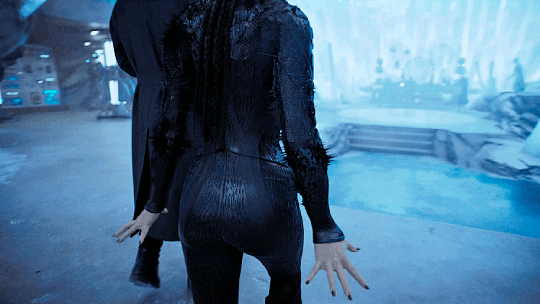


María Gabriela de Faría as the Engineer Superman (2025)
145 notes
·
View notes
Text
Se recaudaron cuatro millones de pesos en la Peña a Beneficio de Nico Rempel y Bauti Pascuali
http://dlvr.it/T8yntB
0 notes
Text

My workplace! :)
29 notes
·
View notes
Photo

MY DESIGN | PaSCUALI #handknitted #menssweater #tibetean @pascuali_filati_naturali #design #sabineberlippstrickdesign #knitdesign #sabineberlipp #knittedby #talented @isabellaschotz for #pascuali #knitstagram #knittersofinstagram #penelopesmissionofvision #pmov
#menssweater#knittedby#pascuali#knitstagram#design#handknitted#knitdesign#tibetean#penelopesmissionofvision#talented#sabineberlipp#sabineberlippstrickdesign#knittersofinstagram#pmov
2 notes
·
View notes
Photo

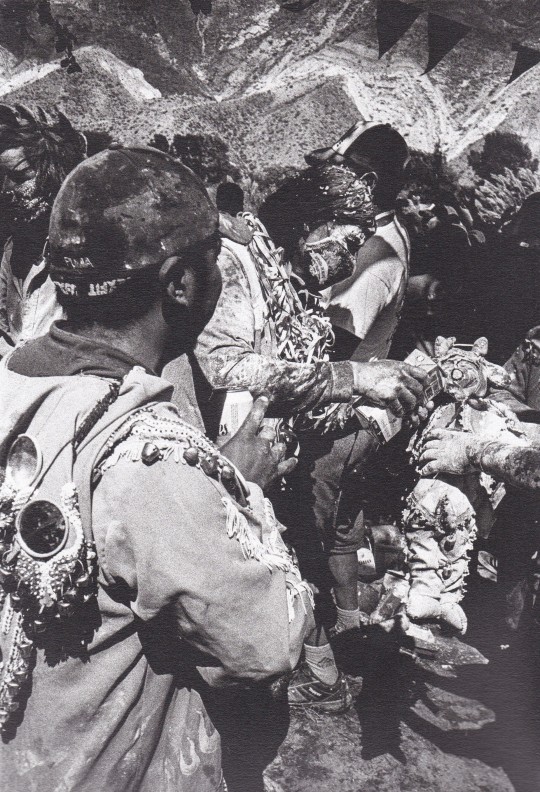


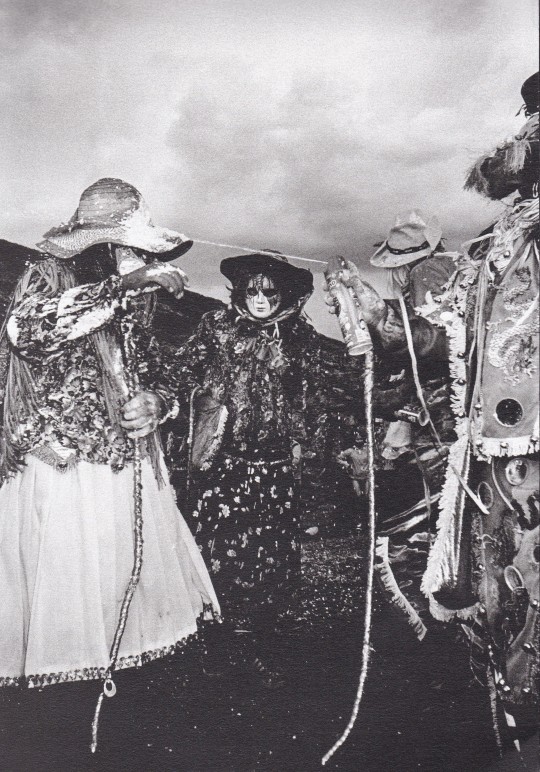

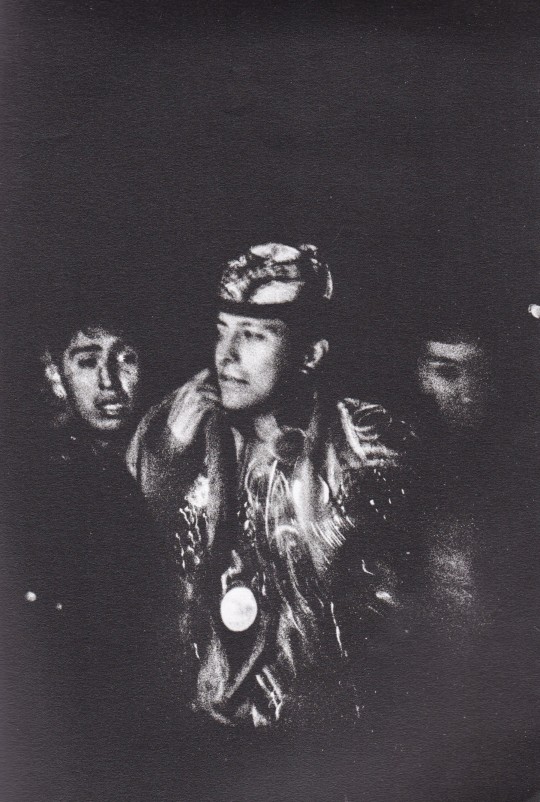

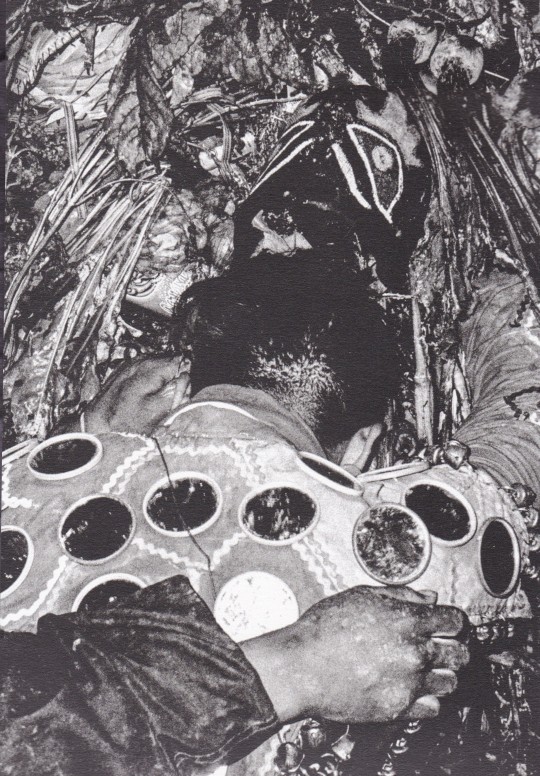
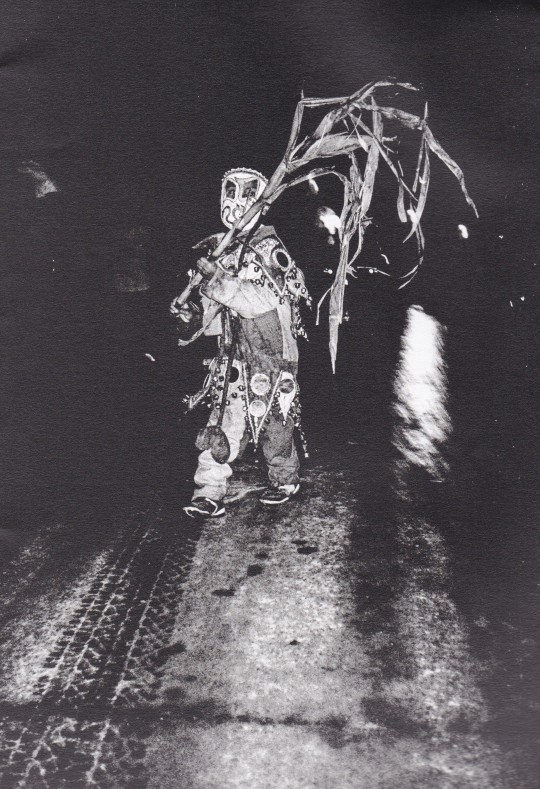
Trance
Ariel Bernardo Pascuali
Texto Martin Esquivel Viveros
Mec Museo en los cerros, Tilcara Argentina 2021, 38 pages, 21,3 x 31,5 cm
euro 120,00
email if you want to buy [email protected]
A la comunidad de Maimarà, Tilcara, Uquia y Yavi. A los Diablos
Este viaje fotográfico nos sumerge como un sueño en las quebradas de la memoria y nos conecta con mundos suprasensibles. La alegría del carnaval es custodiada por el Diablo carnavalero, entidad vistosa e imponente, que cada verano brota desde el vientre mismo de la tierra e irrumpe en la cotidianidad de la gente que habita los pueblos andinos. Cuerpos ágiles ceden sus carnes para transformarse durante días y noches en celebrantes extasiados. Cautivado por el sonido de los cascabeles y el olor de la albahaca que enamora, o enlazados por las serpentinas de vibrante color, viven el instante maravilloso del desentierro del Diablos del Carnaval. Al final del carnaval los caminantes de la noche se hacen presentes ante la luz y deciden revelarnos sus rostros. Se suspende el tiempo dedicado a la alegría, una alegría que habita en lo profundo de la tierra. En la concepción andina del mundo, el mundo de abajo, el ukku pacha es el lugar donde moran los ancestros, los espíritus y lo milenariamente oculto; un espacio simbólico y mítico de la cosmovision quechua y aymara ancestral, que irradia una poderosa energía denominada saxra. Estas imágenes, como un manuscrito antiguo, nos develan la memoria viva de los cuerpos. Una alegría efímera y poderosa que se manifiesta en las noches estrelladas de verano y que, embriagada de chicha madura, nos alienta a desatar lo diabólico que nos habita - y que somos - en tiempo de carnaval.
28/04/23
orders to: [email protected]
ordini a: [email protected]
twitter: fashionbooksmilano
instagram: fashionbooksmilano, designbooksmilano tumblr: fashionbooksmilano, designbooksmilano
#Trance#Ariel Pascuali#Mec Museo en los cerros#carnaval#Maimarà#Tilcara#Uquia#Yavi#Argentina#photography books#libri fotografia#rare books#fashionbooksmilano
4 notes
·
View notes
Text
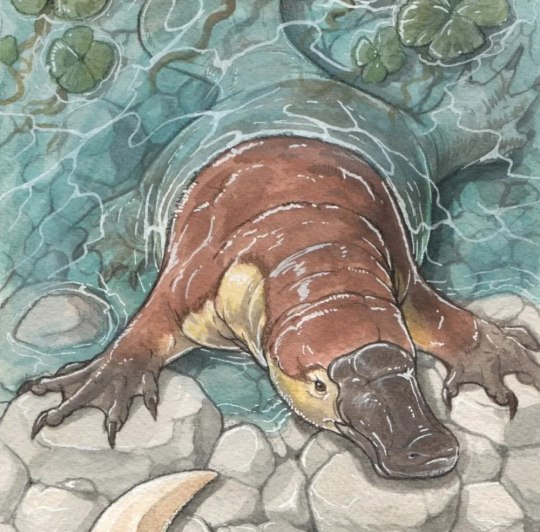
Patagorhynchus
Patagorhynchus — вимерлий рід однопрохідних (Monotremata) ссавців з крейди Південної Америки. Єдиний та типовий вид — Patagorhynchus pascuali. Рід описаний в 2023 році та на момент свого опису є першим відомим родом зубатих однопрохідних ссавців з крейди суперконтиненту Гондвана.
Повний текст на сайті "Вимерлий світ":
https://extinctworld.in.ua/patagorhynchus/
#platypus#mammal#monotremata#art#cretaceous#paleoart#gondwana#south america#cretaceous period#ua#paleontology#prehistoric#prehistory#extinct#ukraine#animals#article#daily#fossils#ukrainian#мова#українська мова#україна#тварини#patagorhynchus#usa
53 notes
·
View notes
Text
Multituberculate Earth: Monotremes
Monotremes, in our timeline the sole non-therian mammals, are much less out of place in this alternate history. Many of their most unique features, like sprawling limbs, venomous spurs, multiple headed penises and egg laying from which poorly developed fetal babies are spawned, are way more common with allotheres around. Still, their fleshy “beaks” full of electroreceptors are like no other, and they amusingly share tribosphenic teeth (when they’re not toothless) and “normal” chewing with the unrelated therian mammals, as opposed to the palinal stroke and odd teeth of multituberculates.
In both timelines, the early Cenozoic was a period of exploration for these animals. Monotrematum sudamericum and the earlier Patagorhynchus pascuali are the first (and, in our timeline, only) monotremes to occur outside of Oceania in South America, while at this point echidnas split off from platypodes according to genetic data, likely evolving in isolation in New Guinea where they lost their aquatic habits. In Australia proper, the Obdurodon assemblage (which may or may not be ancestral to modern Ornithorhynchus platypodes) dominates the lakes and rivers, some attaining lengths of over a meter.
All of this also happens in this timeline, but the late Eocene sees the evolution of marine monotremes in the southern oceans. The absence of cetaceans and the formation of the nutrient rich circumpolar current encouraged these animals to forage in the sea, and soon they underwent an adaptative radiation, producing mollusc eaters, piscivores, filter feeders and even macropredators.
The Oligocene saw the arrival of other marine mammals to Antarctic waters, but conversely monotremes migrated northwards, soon attaining a cosmopolitan presence. With a smaller diversity of large fish than in our world, marine mammals were free to diversify exponentially, and in the case of monotremes they retained much of their diversity, with increasingly specialised durophagists, suction feeding cephalopod predators and filter feeders arising as well, the latter the most abundant.
Of the marine mammals in this timeline, they are arguably the most cetacean-like, with forms refining electroreception like our odontocetes developed sonar and others becoming analogous to baleen whales. Several species have developed vivipary and became fully marine, though a few still need to return to shore to breed.
#multituberculate earth#spec evo#speculative evolution#speculative biology#speculative zoology#monotreme#monotremata
5 notes
·
View notes
Text
Lagerpeton
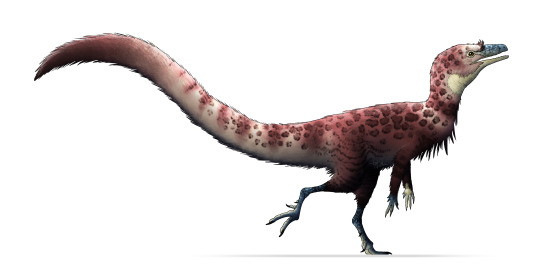
By Tas
Etymology: Rabbit Reptile
First Described By: Romer, 1971
Classification: Biota, Archaea, Proteoarchaeota, Asgardarchaeota, Eukaryota, Neokaryota, Scotokaryota Opimoda, Podiata, Amorphea, Obazoa, Opisthokonta, Holozoa, Filozoa, Choanozoa, Animalia, Eumetazoa, Parahoxozoa, Bilateria, Nephrozoa, Deuterostomia, Chordata, Olfactores, Vertebrata, Craniata, Gnathostomata, Eugnathostomata, Osteichthyes, Sarcopterygii, Rhipidistia, Tetrapodomorpha, Eotetrapodiformes, Elpistostegalia, Stegocephalia, Tetrapoda, Reptiliomorpha, Amniota, Sauropsida, Eureptilia, Romeriida, Diapsida, Neodiapsida, Sauria, Archosauromorpha, Crocopoda, Archosauriformes, Eucrocopoda, Crurotarsi, Archosauria, Avemetarsalia, Ornithodira, Dinosauromorpha, Lagerpetidae
Referred Species: L. chanarensis
Status: Extinct
Time and Place: About 235 to 234 million years ago, in the Carnian of the Late Triassic
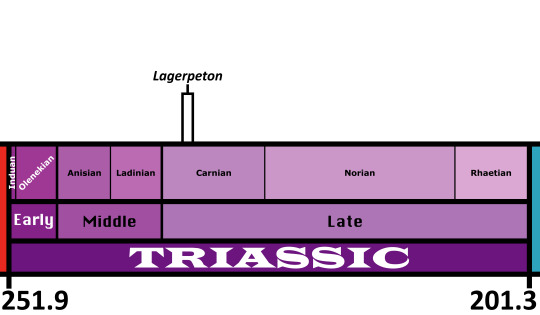
Lagerpeton is known from the Chañares Formation in La Rioja, Argentina

Physical Description: Lagerpeton was named as the Rabbit Reptile, and for good reason - in a lot of ways, it represents a decent attempt by reptiles in trying to do the whole hoppy-hop thing. You might think that it resembles Scleromochlus in that way, and you’d be right! Scleromochlus and Lagerpeton are close cousins, but one is on the line towards Pterosaurs - Scleromochlus - and the other is on the line towards dinosaurs - Lagerpeton. So, hopping around was an early feature that all Ornithodirans (Dinosaurs, Pterosaurs, and those closest to them) shared. Lagerpeton itself was about 70 centimeters in length, with most of that length represented as tail; it was slender and lithe, built for moving quickly through its environment. It had a small head, a long neck, and a thin body. While it had long legs, it also had somewhat long arms, and while it may have been able to walk on all fours it also would have been able to walk on two legs alone. It was digitigrade, walking only on its toes, making it an even faster animal. Its back was angled to help it in hopping and running through its environment, and its small pelvis gave it more force during hip extension while jumping. In addition to all of this, it basically only really rested its weight on two toes - giving it even more hopping ability! As a small early bird-line reptile, it would have been covered in primitive feathers all over its body (protofeathers), though what form they took we do not know.
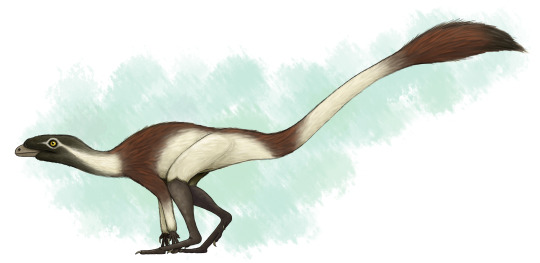
By Scott Reid
Diet: As an early dinosaur relative, it’s more likely than not that Lagerpeton was an omnivore, though this is uncertain as its head and teeth are not known at this time.
Behavior: Lagerpeton would have been a very skittish animal, being so small in an environment of so many kinds of animals - and as such, that hopping and fast movement ability would have aided it in escaping and moving around its environment, avoiding predators and reaching new sources of food (and, potentially, chasing after smaller food itself). Lagerpeton may have also been somewhat social, moving in small groups, potentially families, to escape the predators and chase after prey together, given its common nature in its environment. As an archosaur, Lagerpeton was more likely than not to take care of its young, though we don’t know how or to what extent. The feathers it had would have been primarily thermoregulatory, and as such, they would have helped it maintain a constant body temperature - making it a very active, lithe animal.
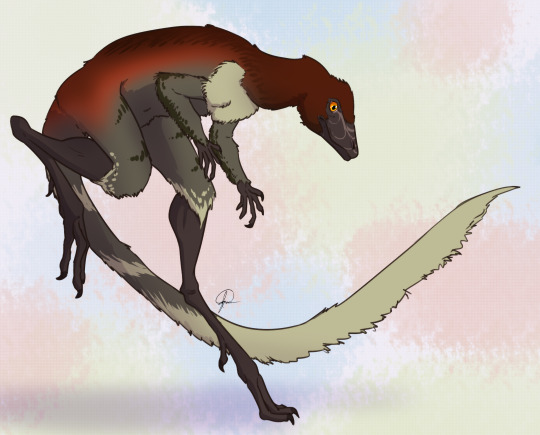
By José Carlos Cortés
Ecosystem: Lagerpeton lived in the Chañares environment, a diverse and fascinating environment coming right after the transition from the Middle to Late Triassic epochs. Given that the first true dinosaurs are probably from the start of the Late Triassic, this makes it a hotbed for understanding the environments that the earliest dinosaurs evolved in. Since Lagerpeton is a close dinosaur relative, this helps contextualize its place within its evolutionary history. This environment was a floodplain, filled with lakes that would regularly flood depending on the season. There were many seed ferns, ferns, conifers, and horsetails. Many different animals lived here with Lagerpeton, including other Dinosauromorphs like the Silesaurid Lewisuchus/Pseudolagosuchus and the Dinosauriform Marasuchus/Lagosuchus. There were crocodilian relatives as well, such as the early suchian Gracilisuchus and the Rauisuchid Luperosuchus. There were also quite a few Proterochampsids, such as Tarjadia, Tropidosuchus, Gualosuchus, and Chanaresuchus. Synapsids also put in a good show, with the Dicynodonts Jachaleria and Dinodontosaurus, as well as Cynodonts like Probainognathus and Chiniquodon, and the herbivorous Massetognathus. Luperosuchus would have definitely been a predator Lagerpeton would have wanted to get away from - fast!

By Ripley Cook
Other: Lagerpeton is one of our earliest derived Dinosauromorphs, showing some of the earliest distinctions the dinosaur-line had compared to other archosaurs. Lagerpeton was already digitigrade - an important feature of Dinosaurs - as shown by its tracks, called Prorotodactylus. These tracks also showcase that dinosaur relatives were around as early as the Early Triassic - and that their evolution, and the rapid diversification of archosauromorphs in general, was a direct result of the end-Permian extinction.
~ By Meig Dickson
Sources Under the Cut
Arcucci, A. 1986. New materials and reinterpretation of Lagerpeton chanarensis Romer (Thecodontia, Lagerpetonidae nov.) from the Middle Triassic of La Rioja, Argentina. Ameghiniana 23 (3-4): 233-242.
Arcucci, A. B. 1987. Un nuevo Lagosuchidae (Thecodontia-Pseudosuchia) de la fauna de los Chañares (Edad Reptil Chañarense, Triasico Medio), La Rioja, Argentina. Ameghiniana 24: 89 - 94.
Arcucci, A., C. A. Mariscano. 1999. A distinctive new archosaur from the Middle Triassic (Los Chañares Formation) of Argentina. Journal of Vertebrate Paleontology 19: 228 - 232.
Bittencourt, J. S., A. B. Arcucci, C. A. Marsicano, M. C. Langer. 2014. Osteology of the Middle Triassic archosaur Lewisuchus admixtus Romer (Chañares Formation, Argentina), its inclusivity, and relationships amongst early dinosauromorphs. Journal of Systematic Palaeontology: 1 - 31.
Brusatte, S. L., G. Niedzwiedzki, R. J. Butler. 2011. Footprints pull origin and diversification of dinosaur stem lineage deep into Early Triassic. Proceedings of the Royal Society B: Biological Sciences 278 (1708): 1107 - 1113.
Ezcurra, M. D. 2006. A review of the systematic position of the dinosauriform archosaur Eucoelophysis baldwini Sullivan & Lucas, 1999 from the Upper Triassic of New Mexico, USA. Geodiversitas 28(4):649-684.
Ezcurra, M. D. 2016. The phylogenetic relationships of basal archosauromorphs, with an emphasis on the systematics of proterosuchian archosauriformes. PeerJ 4: e1778.
Fechner, R. 2009. Morphofunctional evolution of the pelvic girdle and hindlimb of DInosauromorpha on the lineage to Sauropoda (Thesis). Ludwigs Maximillians Universita.
Fiorelli, L. E., S. Rocher, A. G. Martinelli, M. D. Ezcurra, E. Martin Hechenleitner, M. Ezpeleta. 2018. Tetrapod burrows from the Middle-Upper Triassic Chañares Formation (La Rioja, Argentina) and its palaeoecological implications. Palaeogeography, Palaeoclimatology, Palaeoecology 496: 85 - 102.
Kammerer, C. F., S. J. Nesbitt, N. H. Shubin. 2012. The first Silesaurid Dinosauriform from the Late Triassic of Morocco. Acta Palaeontological Polonica 57 (2): 277.
Kent, D. V., P. S. Malnis, C. E. Colombi, A. A. Alcober, R. N. Martinez. 2014. Age constraints on the dispersal of dinosaurs in the Late Triassic from magnetochronology of the Los Colorados Formation (Argentina). Proceedings of the National Academy of Sciences 111: 7958 - 7963.
Irmis, R. B., S. J. Nesbitt, K. Padian, N. D. Smith, A. H. Turner, D. T. Woody, and A. Downs. 2007. A Late Triassic dinosauromorph assemblage from New Mexico and the rise of dinosaurs. Science 317:358-361.
Jenkins, F. A. 1970. The Chañares (Argentina) Triassic reptile fauna. VII. The postcranial skeleton of the traversodontid Massetognathus pascuali (Therapsida, Cyondontia). Breviora 352: 1 - 28.
Langer, M. C., S. J. Nesbitt, J. S. Bittencourt, R. B. Irmis. 2013. Non-dinosaurian Dinosauromorphs. Geological Society London, Special Publications. 379 (1): 157 - 186.
Marsh, A. D. 2018. A new record of Dromomeron romeri Irmis et al., 2007 (Lagerpetidae) from the Chinle Formation of Arizona, U.S.A. PaleoBios 35:1-8.
Marsicano, C. A., R. B. Irmis, A. C. Mancuso, R. Mundil, F. Chemale. 2016. The precise temporal calibration of dinosaur origins. Proceedings of the National Academy of Sciences of the United States of AMerica 113 (3): 509 - 513.
Martz, J. W., and B. J. Small. 2019. Non-dinosaurian dinosauromorphs from the Chinle Formation (Upper Triassic) of the Eagle Basin, northern Colorado: Dromomeron romeri (Lagerpetidae) and a new taxon, Kwanasaurus williamparkeri (Silesauridae). PeerJ 7:e7551:1-71.
Nesbitt, S. J., R. B. Irmis, W. G. Parker, N. D. Smith, A. H. Turner and T. Rowe. 2009. Hindlimb osteology and distribution of basal dinosauromorphs from the Late Triassic of North America. Journal of Vertebrate Paleontology 29(2):498-516.
Nesbitt, S. J. 2011. The early evolution of archosaurs: relationships and the origin of major clades. Bulletin of the American Museum of Natural History 353:1-292.
Perez Loinaze, V. S., E. I. Vera, L. E. Fiorelli, J. B. Desojo. 2018. Palaeobotany and palynology of coprolites from the Late Triassic Chañares Formation of Argentina: implications for vegetation provinces and the diet of dicynodonts. Palaeogeography, Palaeoclimatology, Palaeoecology 502: 31 - 51.
Rogers, R. R., A. B. Arcucci, F. Abdala, P. C. Sereno, C. A. Forster, C. L. May. 2001. Paleoenvironment and taphonomy of the Chañares Formation tetrapod assemblage (Middle Triassic), northwestern Argentina: spectacular preservation in volcanogenic concretions. Palaios 16: 461 - 481.
Romer, A. S. 1966. The Chañares (Argentina) Triassic reptile fauna. I. Introduction. Breviora 247: 1 - 14.
Romer, A. S. 1966. The Chañares (Argentina) Triassic reptile fauna. II. Sketch of the geology of the Rio-Chañares-Rio Gualo Region. Breviora 252: 1 - 20.
Romer, A. S. 1967. The Chañares (Argentina) Triassic reptile fauna. III. Two new gomphodonts, Massetognathus pascuali and M. teruggii. Breviora 264: 1 - 25.
Romer, A. S. 1968. The Chañares (Argentina) Triassic reptile fauna. IV. The dicynodont fauna. Breviora 295: 1 - 25.
Romer, A. S. 1969. The Chañares (Argentina) Triassic reptile fauna. V. A new chiniquodontid cynodont, Probelesodon lewisi - cynodont ancestry. Breviora 333: 1 - 24.
Romer, A. S. 1970. The Chañares (Argentina) Triassic reptile fauna. VI. A chiniquodont cynodont with an incipient squamosal-dentary jaw articulation. Breviora 344: 1 - 18.
Romer, A. S. 1971. The Chañares (Argentina) Triassic reptile fauna. VIII. A fragmentary skull of a large thecodont, Luperosuchus fractus. Breviora 373: 1 - 8.
Romer, A. S. 1971. The Chañares (Argentina) Triassic reptile fauna. IX: The Chanares Formation. Breviora 377: 1 - 8.
Romer, A. S. 1971. The Chañares (Argentina) Triassic reptile fauna. X. Two new but incompletely known long-limbed pseudosuchians. Breviora 378:1-10.
Romer, A. S. 1971. The Chañares (Argentina) Triassic reptile fauna. XI. Two new long-snouted thecodonts, Chanaresuchus and Gualosuchus. Breviora 379: 1 - 22.
Romer, A. S. 1972. The Chañares (Argentina) Triassic reptile fauna. XII. The post cranial skeleton of the thecodont Chanaresuchus. Breviora 385: 1 - 21.
Romer, A. S. 1972. The Chañares (Argentina) Triassic reptile fauna. XIII. A fragmentary skull of a large thecodont, Luperosuchus fractus. Breviora 389: 1 - 8.
Romer, A. S. 1972. The Chañares (Argentina) Triassic reptile fauna. Lewisuchus admixtus, gen. et sp. Nov., a further thecodont from the Chañares beds. Breviora 390: 1 - 13.
Romer, A. S. 1972. The Chañares (Argentina) Triassic reptile fauna. XV. Further remains of the thecodonts Lagerpeton and Lagosuchus. Breviora 394: 1 - 7.
Romer, A. S. 1972. The Chañares (Argentina) Triassic reptile fauna. XVI. Thecodont classification. Breviora 395:1-24.
Romer, A. S. 1972. The Chañares (Argentina) Triassic reptile fauna. XVII. The Chañares gomphodonts. Breviora 396: 1 - 9.
Romer, A. S. 1973. The Chañares (Argentina) Triassic reptile fauna. XVIII. Probelesodon minor, a new species of carnivorous cynodont; family Probainognathidae nov. Breviora 401: 1 - 4.
Romer, A. S., and A. D. Lewis. 1973. The Chañares (Argentina) Triassic reptile fauna. XIX. Postcranial materials of the cynodonts Probelesodon and Probainognathus. Breviora 407: 1 - 26.
Romer, A. S. 1973. The Chañares (Argentina) Triassic reptile fauna. XX. Summary. Breviora 413: 1 - 20.
Sereno, P. C., and A. B. Arcucci. 1994. Dinosaurian precursors from the Middle Triassic of Argentina: Marasuchus lilloensis, gen. nov. Journal of Vertebrate Paleontology 14(1):53-73.
#Lagerpeton#Dinosaurmorph#Lagerpetid#Triassic#Palaeoblr#Triassic Madness#Ornithodiran#Triassic March Madness#South America#Omnivore#Prehistoric Life#Prehistory#Palaeontology#Lagerpeton chanarensis#dinosaur#paleontology#dinosaurs#biology#a dinosaur a day#a-dinosaur-a-day#dinosaur of the day#dinosaur-of-the-day#science#nature#factfile
365 notes
·
View notes
